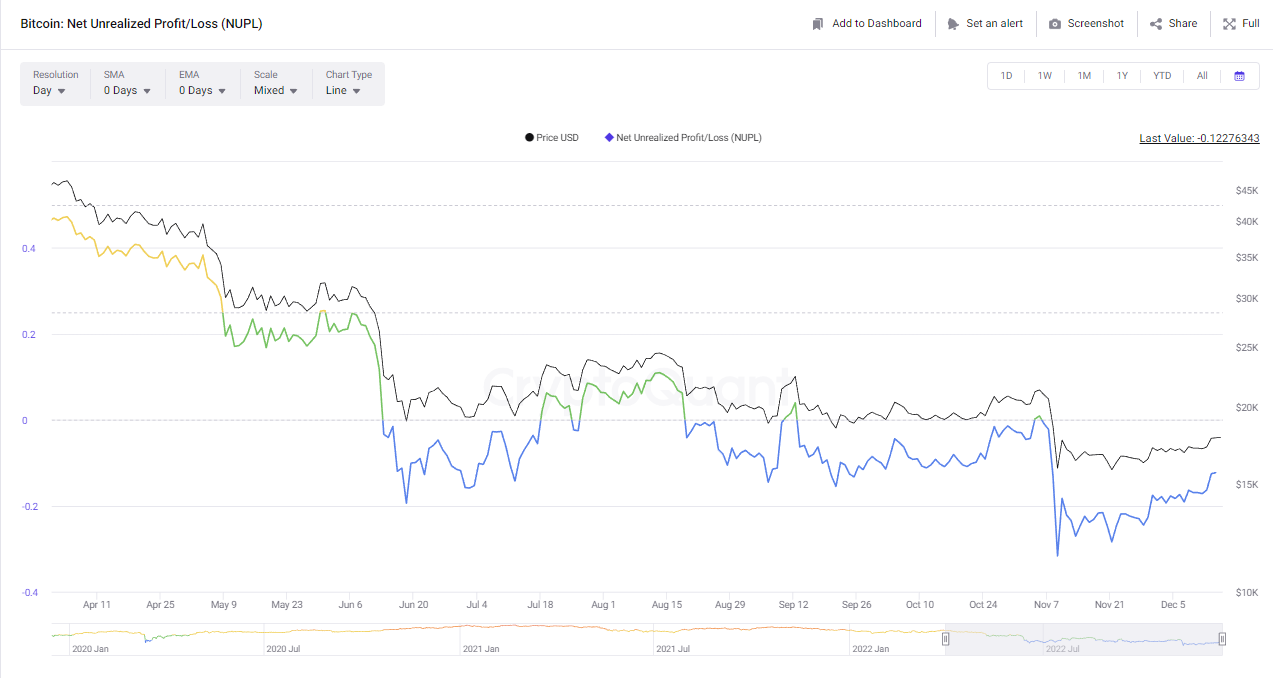Blockchain analytics firm Chainalysis has attempted to put the FTX collapse into perspective — comparing peak realized losses in the wake of the exchange’s collapse compared to previous major crypto collapses in 2022.
The Dec. 14 report found the depegging of Terra USD (UST) in May saw weekly-realized losses peak at $20.5 billion, while the subsequent collapse of Three Arrows Capital and Celsius in June saw weekly-realized losses peak at $33 billion.
In comparison, weekly realized losses during the FTX saga peaked at $9 billion in the week starting Nov. 7, and have been reducing weekly since.
1/ Our data suggests that FTX’s demise hasn’t been crypto investors’ biggest issue this year. Both the depegging of Terra’s UST token & the collapse weeks later of Celsius & Three Arrows Capital (3AC) drove much bigger realized losses. https://t.co/tWpX9qjY6o pic.twitter.com/TI2eJSVXaW
— Chainalysis (@chainalysis) December 14, 2022
Chainalysis said the data suggests that by the time the FTX debacle took place in November, investors have already been hit with the “heaviest” crypto events this year.
“The data […] suggests that as of now, the heaviest hitting [crypto] events were already behind investors by the time the FTX debacle took place.”
The analytics firm calculated total realized losses by looking at personal wallets and measuring the value of assets as they were acquired and subtracting the value of these assets at the time they were sent elsewhere.
However, the data may still have overestimated realized losses, as it counted any movement from one wallet to another as a sale event. Chainalysis aalso noted that the chart doesn’t take other statistics into account, such as user funds stored on FTX’s exchange which are frozen.
“We can’t assume that any cryptocurrency sent from a given wallet is necessarily going to be liquidated, so think of these numbers as an upper bound for realized gains of a given wallet,” it explained.
Related: Was the fall of FTX really crypto’s ‘Lehman moment?’
While Chainalysis’ data covers realized losses, on-chain analytics platform CryptoQuant recently shared data on how net unrealized losses for Bitcoin (BTC) was impacted following the FTX collapse.
It found that unrealized losses for BTC maxed at -31.7% following the FTX collapse compared to the collapse of 3AC/Celsius and Terra Luna, which only peaked at -19.4%.

Analytics data firm Glassnode also highlighted the high level of unrealized losses following the FTX collapse in a Nov. 17 tweet, comparing it to the peak of -36% seen during the 2018 bear market.
#Bitcoin Long-Term Holders are currently experiencing acute financial stress, holding an average of -33% in unrealized losses.
This is comparable to the lows of the 2018 bear market, which saw a peak unrealized loss of -36% on average.
Chart: https://t.co/qIGAxtSyGZ pic.twitter.com/BBtbOtApy1
— glassnode (@glassnode) November 17, 2022
The gains or losses associated with an investment are considered unrealized up until the point that the investment is sold. The act of selling “realizes” these losses or gains. Unrealizes losses are also known as paper losses.






